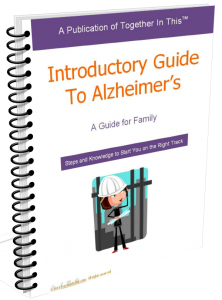Be a Smart Shopper
Planning ahead can help you choose healthy foods when you shop. It can also help you get the most for your money.
Make a List
 Before going to the grocery store, plan your meals and snacks for the next few days or a week.
Before going to the grocery store, plan your meals and snacks for the next few days or a week.
Make a shopping list of foods you will need and then buy only the items on your list. To avoid impulse buying, try to do your shopping when you’re not hungry or rushed.
Download a sample shopping list of grocery items.
Foods to Choose
 Plan to buy low-fat, nutrient-dense items like vegetables and fruits, seafood, lean meats, and whole-grain cereals and breads.
Plan to buy low-fat, nutrient-dense items like vegetables and fruits, seafood, lean meats, and whole-grain cereals and breads.
Also put other nutrient-dense items like low-fat or fat-free dairy products, eggs, beans and peas, and unsalted nuts on your shopping list. Many of these items are usually found on the outer ring of the grocery store.
Foods to Limit
 Try not to buy a lot of snack foods and deserts, even if they’re on sale. These foods, such as candy, crackers, chips, cake, and cookies can be high in sodium, added sugar, and fat.
Try not to buy a lot of snack foods and deserts, even if they’re on sale. These foods, such as candy, crackers, chips, cake, and cookies can be high in sodium, added sugar, and fat.
They often give you fewer nutrients for the calories you consume than non-snack foods. Limit the amount of soups and lunch meat you buy for the same reasons unless you are buying the special lean, low-fat, low-sodium products.
For more on healthy foods to shop for, see “Shopping for Food That’s Good for You.”
Read the Nutrition Facts Label
Take time to read the Nutrition Facts label on food packages and cans until you are familiar with them. The Nutrition Facts tell you how many calories and which nutrients the food provides. It also tells you how much fat, cholesterol, sodium, carbohydrate, and sugars a single serving of the food will give you.
 The Nutrition Facts can help you choose more healthy foods and compare the contents of different brands. When reading the Nutrition Facts, be sure to read the serving size and how many servings the package contains.
The Nutrition Facts can help you choose more healthy foods and compare the contents of different brands. When reading the Nutrition Facts, be sure to read the serving size and how many servings the package contains.
See tips on how to read the Nutrition Facts label
(Note: The FDA recently proposed updates to the Nutrition Facts label to reflect the latest scientific information linking diet and chronic diseases like obesity and heart disease. Proposed updates include a new design that better highlights key parts of the label such as calories and serving sizes.)
Don’t Feel Like Cooking?
 Before going to the store, check your stock of staples like flour, sugar, rice, and cereal. Also, check your supply of canned and frozen foods, which can be handy when you don’t feel like cooking or can’t go out. Try to choose canned and frozen products that are low in sodium, saturated and trans fats, cholesterol, and added sugars.
Before going to the store, check your stock of staples like flour, sugar, rice, and cereal. Also, check your supply of canned and frozen foods, which can be handy when you don’t feel like cooking or can’t go out. Try to choose canned and frozen products that are low in sodium, saturated and trans fats, cholesterol, and added sugars.
Stretch Your Meals
Plan to buy enough ingredients to cook more than one meal and then freeze meal-sized portions. These can replace purchased frozen dinners that may have more fat and sodium in them. Many soups, casseroles, fish, and meats freeze well for later use. Also, choose fresh fruits and vegetables when they’re in season, and buy frozen produce when fresh items are out of season.
If You Need Help Shopping
If you find it hard to shop because you don’t drive or have trouble walking or carrying groceries, help may be available. Some grocers offer home-delivery services. Some supermarkets and chains let you order groceries and other products on the Internet. For a small fee, the groceries can be delivered to your home.
Some grocers offer home-delivery services. Some supermarkets and chains let you order groceries and other products on the Internet. For a small fee, the groceries can be delivered to your home.
You might also ask family or friends, your place of worship, or a local volunteer center for help with shopping. Home-delivered meals are also available for people who can’t get out. Your Area Agency on Aging might be able to tell you where to get help if you can’t shop or make your own meals. To contact your Area Agency on Aging, call the Eldercare Locator toll free at 1-800-677-1116.
This article is the original work of the National Institutes of Health
Source: NIH Senior Health (NIHSH)
SourceUrl: http://nihseniorhealth.gov/eatingwellasyougetolder/beasmartshopper/01.html
Captured Date: 2016-04-15
If you like what you’ve read, why not receive periodic updates by subscribing to the TinT Newsletter?
Questions or thoughts? Let me know by commenting below:





Leave a Reply